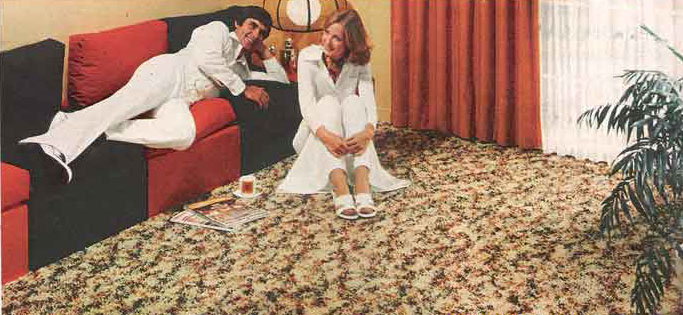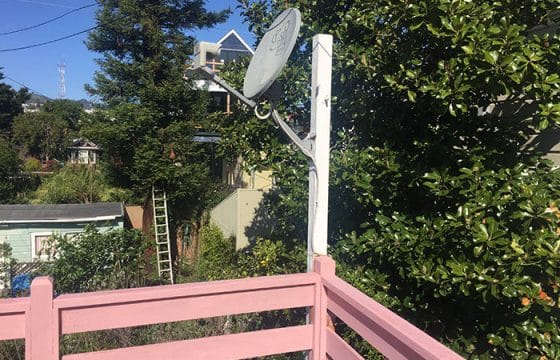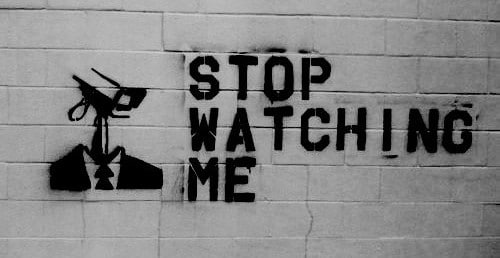
Can My Landlord Make Me Pay To Replace The Carpet?
When we moved in, our landlord warned us that the carpet ‘easily stains’ so we must take our shoes off. We do but after two years of living there, the carpet is definitely worn down.
Now she claims that the carpet should not be so dirty & that our upstairs neighbor has the same carpet that is very clean. We also have had a few accidents which we know we are responsible for- a few burn marks & a nail polish stain. The landlord is claiming that because of how dirty the carpet is in addition to the marks, we will be responsible for replacing the entire apartment because she does not want ‘seams’!
If the carpet is thoroughly cleaned when we move out, and all that remain are the few marks we are responsible for, can she make us replace the entire carpeting?
Ah, carpets…one of the big three, along with hardwood floors and ovens. If all landlords are attracted to a dirty ovens like Sylvia Plath, they become vengeful Aladdins when they suspect that tenants have diminished the magic of the wall-to-wall.
Carpets and drapes – “useful life” rule
Ordinary wear and tear to carpets, drapes and other furnishings cannot be charged against a tenant’s security deposit. (Civil Code Section 1950.5(e).) Ordinary wear and tear includes simple wearing down of carpet and drapes because of normal use or aging, and includes moderate dirt or spotting. In contrast, large rips or indelible stains justify a deduction from the tenant’s security deposit for repairing the carpet or drapes, or replacing them if that is reasonably necessary.
One common method of calculating the deduction for replacement prorates the total cost of replacement so that the tenant pays only for the remaining useful life of the item that the tenant has damaged or destroyed.
The dispositive question one must ask is, “How old is the carpet?” That’s important because carpets don’t last forever.
How do you determine the approximate age of your carpet?
The landlord inadvertently tipped you off that the carpet would be a problem when you moved in. At that point, you should have casually asked the landlord when the carpet had been installed. Generally, tenants should ask this type of question before moving in and take comprehensive photos of a unit before they unload their furniture.
If you are planning to have the carpet professionally cleaned, you have another opportunity to get an estimate of the carpet’s age—ask the carpet cleaner. If you can, get them to sign a letter or declaration stating their opinion about the condition and age of the carpet. If the cleaner is reluctant, either find someone else who will attest to the carpet’s age or ask them to simply note it on the invoice—”Steam clean 50 year old shag carpet, with special raking of Acapulco Gold and Windowpane residue.
How can you calculate the useful life of carpets?
Landlords are allowed to deduct the annual depreciation of items like appliances and carpets from gross income for tax purposes.
IRS Tax Publication 527 provides information regarding expense deductions, including allowable depreciation schedules, for residential rental property. Table 2-1 on page 9 of the publication shows allowable depreciation of property used in rental activities. Using the general depreciation system carpets have a usable life of 5 years. Using the alternative depreciation system, carpets have a usable life of 9 years. (IRS Tax Publication 527, page 9, Table 2-1.) Most landlords use the general depreciation system.
For example, suppose a tenant has truly damaged a carpet beyond ordinary wear and tear (hard to prove), an eight-year-old carpet that had a life expectancy of five years would be worth nothing, zero, zip, nada. The landlord has to eat the replacement cost despite the damage beyond ordinary ware and tear.
Using the same example, with a life expectancy of nine years and if a replacement carpet of similar quality would cost $2,000, the landlord could properly charge only $222.22 for only one years’ worth of life (use) that would have remained if the tenant had not damaged the carpet.
In your case, we know that the carpet was not new when you moved in. Assuming that the carpet is three years old, and the small marks to which you refer do not constitute ordinary wear and tear (highly unlikely), you could be liable for 40% of the replacement cost of a similar carpet.
This isn’t legal advice, but I’ve repaired carpets myself. One can do things like carefully trimming off the burned top of the pile on the carpet. Or, cutting out a little piece of the carpet in a closet and gluing it in a small stained area that one has carefully removed like a hair plug. I’m talking small area here, like at most an half an inch square. Don’t try to replace the blood stains from a Goodfellas-style beat down.
Ask an expert. There are plenty of tricks to repair carpet that won’t involve a security deposit deduction.
Make sure you take photos when you move out. If the landlord attempts to deduct from your security deposit, go to the San Francisco Tenants Union to discuss how you can sue her for maximum damages.
Finally, ask yourself, “What kind of landlord would install carpets in a rental unit that easily stain except a Cheese Ball who charges her tenants to pay for replacement every time they move out?” A Cheese Ball who pockets the cost, doesn’t replace the carpets, and still deducts the depreciation from her taxes, that’s who.




I lived in a house that was being rented out by a national rental agency. The only ones that lived in this house was me, my wife, and three dogs. When we moved in, I asked the property managers about the age of the carpeting. They informed me that at that time it was about 3-4 years old. I also had them take pictures of spots and stains that were already in the carpet before we moved in. Now, after have lived there three years, they are trying to charge me almost $2800 to replace the rugs stating that “I cannot remove the flooring, as it had to be replaced do to the odor. Was marked on the report as ‘awful’.” They state the the total replacement will cost almost $9000 and I would have to pay about 30% of that amount.
We just had to charge a tenet for carpet. It was three years old. There was a stain that would not come out. We pulled the carpet up and notice the stain was visible on the backside too. Apparently someone had dumped a bunch of liquid of some kind, enough to soak through. Likely a large dog peed on it. They also left not one but literally two truckloads of trash on the property that had to be hauled off.
My plan is to regularly replace the carpet about every 5 years so it always looks new. But if it is uncleanable on the 2nd year we charge for 3/5 of the cost to replace.
I think “uncleanable” is a good criterion. If a professional carpet cleaner can’t make a five-year-old carpet look good then the carpet has had more than normal wear. This is also easy to say and explain and removes a judgment call.
Getting back to the question. If the nail polish came out after a carpet cleaners machine was used, then I’d not charge the tenet. But if I had to do any more repair work, I’d call it “damage”. With lucj it is only a simple 1-hour spot cleaning job and I’d charge only about $50. But if the repair was to replace it then it is more like $1K. Our carpet guy recommends buying the cheapest carpet he sells and replacing it every 5 years. Our cost per year is reduced and tenets like it because it would be at most 4 years old on their move-in day.
Again, I’d say if there is a visible defect in the carpet after it has been cleaned, it is “damaged” and not normal usage
Same is used with rental cars. If the car after return looks good after a wash and vacuum itis normal but if there is a dent, that is damage. They don’t charge you to remove the dirt, only for actual repair work.
It’s a really popular problem. Actually the guy named Rock put a good comment here. It looks fair to pay only 2/7 of full carpet price if carpet cleaning didn’t work for you. Though It is worth mentioning that the modern carpet-cleaning technique allows cleaning even very hard and old stains.
I know who got part of my answer to the question why am I paying for service people to move my furniture around when the landlord wants to change the carpet or replace it tell carpet their responsibility
I do have the follow-up question in terms of payment my doctor has informed me that carpeting is having a deleterious effect of my help. I am disabled dirty filthy carpeting is not good carpeting that is old and worn since I have problems walking I could fall. If he continues not to agree to payment do I have a legal case if anything happens to hold her responsible to my falling or getting sick because of the carpeting
Couple months ago I requested that the landlord check out my carpeting I felt was getting much too old. He sent maintenance my apartment and they agreed that needs to be replaced then I was told that I would have to move all of my furniture to be responsible for the payment of that move. I am 70 years old living on a fixed income I can either move this furniture because I am disabled nor can I afford to have it move.
I repair carpet full time in Los Angeles, doing high end “invisible” repairs that are structurally stronger than the original carpet…and I guarantee my work.
Carpet stores can contact the manufacturer to find out what the useful life is. If they charge you, you can insist on seeing the original installation receipt since you may not be charged for an upgrade. Apartment carpet sometimes has “5 year life” (really cheap) and usual is 7 years. If the carpet was 3 years old when you moved in, and you lived there 2 years and “destroyed” the carpet, then you would be liable for only 2/7 replacement cost. In CA, if they cannot show a receipt, you are likely being ripped off.
I would ask for proof of replacement, I all too often see managers charge $3,000 or more to replace, then just clean for $300 instead…multiple times on a single carpet.
If they do this to you, my impulse would be to file felony theft charges against the property owner….but I an a carpet repair tech, not an attorney, so my opinion is only that…an opinion.
We are a new carpet cleaning start up and will definitely let our clients know of some of these things they should prepare for.
My father Moved into a rental five years ago… in Sonora CA… the front room carpet is soiled from his dog more than normal, however the rest of the carpet is normal wear. The landlord says it’s high end carpet apric. Costing 4600.00 to replace. Is my dad required by law to pay that replacement costs???